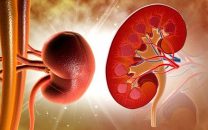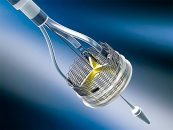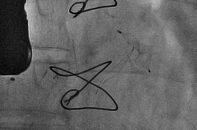Much has been done since studies on conventional balloon angioplasty for BMS instent restenosis showed over 40% new revascularization. Drug eluting stents, aimed at improving this problem, have never achieved 0% restenosis, which is why technologies such as paclitaxel coated balloons have been developed, with reasonable efficacy (8% to 10% reinterventions rate for BMS restenosis and 17% to 23%…
An Important Study Shows That Renal Function Must Be Cared for in TAVR
Courtesy of Dr. Carlos Fava. The presence of renal dysfunction in the “real world” is over 25% in patients who undergo transcatheter aortic valve implantation (TAVI). The evolution of this disease among patients who are subjected to a replacement is well known, but evidence for patients who undergo TAVI is still limited, particularly for those who…
Bioresorbable Scaffolds Must Not Be Chosen Over Current DES
Although there are 4 approved bioresorbable scaffolds (BRS) in Europe, experts suggest that current drug-eluting stents (DES) are the best option for coronary angioplasty. These new guidelines jointly published by the European Society of Cardiology (ESC) and the Association of Percutaneous Cardiovascular Interventions (EAPCI) are an update on the use of BRS in clinical practice…
REPRISE III: Need for Pacemaker and Paravalvular Leak with Lotus
A recent presentation at London Valves took a closer look at the REPRISE III trial as regards two points that generated much discussion, such as need for a pacemaker and paravalvular leak. REPRISE III had previously demonstrated that the Lotus is noninferior to first-generation CoreValve and Evolut R in terms of safety. Additionally, it proved to be superior…
Impella Improves Safety in High Risk Unprotected Left Main PCI
Courtesy of Dr. Carlos Fava. The incidence of unprotected left main severe stenosis ranges between 4 and 8%, and it’s mostly associated with multivessel disease. The use of left ventricular support devices in high risk unprotected left main PCI is on the rise, but not much information available in this regard. Read also: “Prior assistance…
Small Annulus: Should We Start Choosing the Valve?
Courtesy of Dr. Carlos Fava. A small annulus in patients with Severe Aortic Stenosis is a real challenge, since it is associated with post-surgical prosthesis patient mismatch (PPM), which negatively affects prosthesis duration and evolution. TAVR has become a good alternative strategy, with better hemodynamic profile and lower PPM incidence in this group. The present study included 246…
Tricuspid and Bicuspid Valves Present More Coincidences Than Expected
There is more and more positive evidence that new-generation transcatheter valves, originally designed to treat tricuspid aortic valves, work perfectly fine on bicuspid aortic valves. A comparison of computerized tomography (CT) scans obtained before and after the procedure showed that the most commonly used devices appear to reshape the aortic annulus to the same degree…
Transcatheter Reduction or Surgery for Paravalvular Leak Repair?
Paravalvular leak is complication derived from incomplete sealing between the implanted prosthesis and the native annulus, which occurs in 5% of all patients who undergo mitral valve replacement and 10% of those who undergo transcatheter aortic valve replacement. This is the most frequent non-structural valve dysfunction. While mild leaks can be asymptomatic, moderate to severe…
Multivessel Disease and Severe Carotid Stenosis: How to Proceed
Myocardial revascularization surgery (CABG) is the most frequent of all cardiovascular surgeries and is still the gold standard to treat multivessel disease. Between 6 and 8% of these patients present concomitant carotid stenosis and it is associated with increased peri and post procedural stroke rates during and after surgery. To prevent carotid stenosis, either PCI or endarterectomy…
End of Discussion on the Impact of Pacemaker After TAVR?
Transcatheter aortic valve replacement (TAVR) is often associated with conduction abnormalities, which usually end with permanent pacemaker (PPM) implantation in 10-40% of patients. Factors predisposing to PPM after TAVR have been studied in great detail, but their short- and long-term clinical impact is still controversial. Recently, outcomes from a large cohort of patients were…









